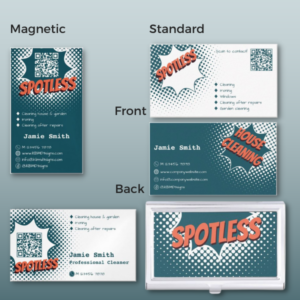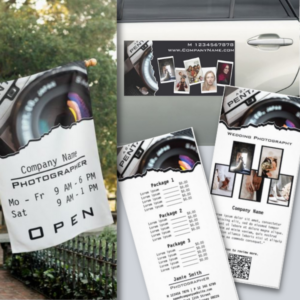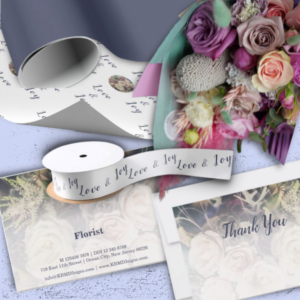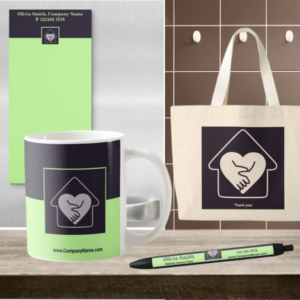How to design a logo for a small business? – is important in the competitive landscape of small business. Having a well-designed logo is critical to establishing brand identity and making a lasting impression on customers. A logo serves as a visual representation of your business. It should effectively communicate your brand’s values, personality, and offerings. However, designing a logo can seem like a daunting task, especially for small business owners with limited resources.
Article Content:
- 9 Steps Guide To Navigate “How to Design a Logo?”
- Logo Types And What Is The Right For Your Business?
- Pros & Cons – Use Print On Demand Designer Templates To Add Your Logo Design
- Avoid These Logo Design Mistakes
- Is Your Logo Legally Available? How To Do A Research
- How Does Legal Availability Affect You Without Logo Trademarking Plans?
- Using A Professional Logo Design – Whose Responsibility Is The Legal Research?
- Frequently Asked Questions and Concise Answers about “How to Design a Logo”
1. 9 Steps Guide To Navigating “ How to Design a Logo? ”
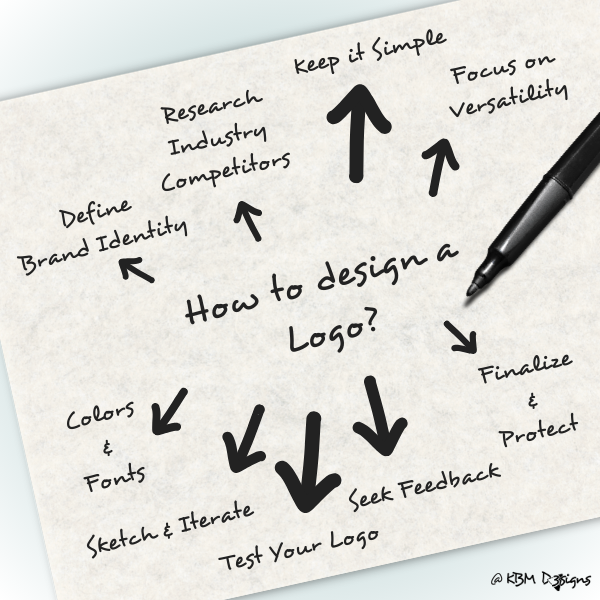
To help you navigate this process and create a standout logo for your small business, here are some essential steps to consider:
1. Define Your Brand Identity:
Before diving into the design process, take some time to define your brand identity. Consider what sets your business apart from competitors, your target audience, and the message you want to convey through your logo. Think about your brand’s values, mission, and the emotions you want to evoke in your customers.
2. Research Your Industry and Competitors:
Conduct thorough research into your industry and analyze your competitors’ logos. Identify common design elements, color schemes, and typography used within your niche. While you want your logo to be unique, understanding industry trends can provide valuable insights and help you differentiate your brand.
3. Keep It Simple:
One of the golden rules of logo design is to keep it simple. A cluttered or overly complex logo can be difficult to recognize and remember. Aim for a clean and minimalist design that is easily scalable and versatile across different platforms and mediums.
4. Focus on Versatility:
Your logo should look great whether it’s displayed on a business card, website, social media profile, or signage. Opt for a design that works well in both color and black and white formats, and consider how it will appear in various sizes. A versatile logo ensures consistency and maintains its impact across different applications.
5. Choose Appropriate Colors and Fonts:
Colors and fonts play a crucial role in conveying your brand’s personality and message. Select colors that resonate with your target audience and align with your brand identity. Likewise, choose fonts that are legible and reflect the tone of your business, whether it’s playful, professional, or sophisticated.
6. Sketch and Iterate:
Start by sketching out rough ideas for your logo. Don’t worry about perfection at this stage—focus on capturing different concepts and elements. Once you have several sketches, narrow down your options and refine them further. Experiment with variations in shape, layout, and typography until you find a design that feels right for your brand.
7. Seek Feedback:
Don’t hesitate to seek feedback from colleagues, friends, or even potential customers. Fresh perspectives can offer valuable insights and help you identify any potential flaws or areas for improvement in your logo design. Be open to constructive criticism and willing to make revisions as needed.
8. Test Your Logo:
Before finalizing your logo, test it across various platforms and contexts to ensure its effectiveness. Consider how it looks on different backgrounds, its visibility at different sizes, and how it resonates with your target audience. Make any necessary adjustments to optimize its impact and appeal.
9. Finalize and Protect Your Logo:
Once you’re satisfied with your logo design, it’s time to finalize it and ensure its protection. Work with a graphic designer or use design software to create high-resolution versions of your logo for different applications. Consider trademarking your logo to protect it from being used by others in the future.
By following these steps, you can create a professional and memorable logo. To effectively represent your small business, invest time and effort in the design process. Doing so will help your business stand out in a crowded marketplace. Remember, your logo is an investment in the future of your brand. Therefore, approach the design process with creativity, strategy, and attention to detail.
2. Logo Types And Which Is The Right One For Your Business?
There are several types of logos, each with its own characteristics and suitability for different purposes. Here are some common logo types and when to choose them:
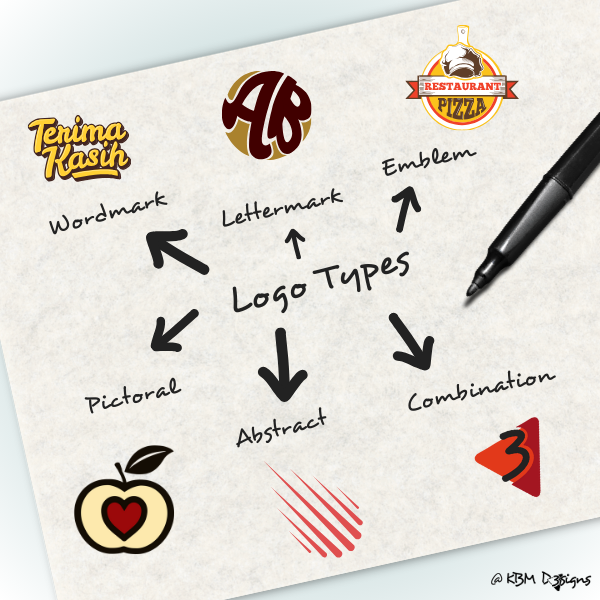
Wordmark (Logotype):
A wordmark logo consists of text only, typically the name of the company or brand, stylized in a unique font or typography. This type of logo is effective for businesses with short, memorable names or established brands seeking to reinforce their name recognition. Wordmark logos are straightforward and ideal when the company’s name itself is distinctive and recognizable.
Lettermark (Monogram):
Lettermark logos use initials or acronyms of the company’s name to create a visually appealing and compact design. This type of logo is beneficial for businesses with long or complex names, allowing them to condense their brand identity into a concise and recognizable mark. Lettermarks are commonly used by companies with lengthy names or those operating in industries where initials are prevalent, such as law firms or technology companies.
Emblem:
Emblem logos combine text and imagery within a unified symbol or icon. The text is usually enclosed within a shape or emblematic element, creating a cohesive and visually appealing design. Emblem logos are often associated with tradition, authority, and heritage, making them popular among government agencies, universities, and organizations with a rich history. They are also well-suited for businesses looking to convey a sense of prestige and professionalism.
Pictorial Mark (Logo Symbol/Icon):
Pictorial mark logos consist of a graphic symbol or icon that represents the company or brand visually. These logos rely on a unique image or illustration to convey the brand’s identity and values, making them instantly recognizable and memorable. Pictorial marks are effective for businesses that want to establish a strong visual identity without relying on text, making them ideal for global brands and companies targeting diverse audiences.
Abstract Mark:
Abstract mark logos use abstract shapes, patterns, or geometric forms to represent the brand in a unique and creative way. Unlike pictorial marks, which depict recognizable objects or symbols, abstract marks rely on non-representational elements to evoke emotion and convey meaning. This type of logo is suitable for businesses that want to stand out with a distinctive and modern visual identity, particularly in industries where innovation and creativity are valued.
Combination Mark:
Combination mark logos integrate both text and imagery to create a versatile and impactful design. They typically feature a wordmark or lettermark alongside a pictorial mark or emblem, allowing for flexibility in branding and recognition. Combination marks offer the best of both worlds, leveraging the memorability of visual symbols with the clarity of text. They are suitable for businesses looking to establish a cohesive brand identity while ensuring their name is prominently featured.
When choosing a logo type for your business, consider factors such as your brand identity, target audience, industry, and long-term branding goals. It’s essential to select a logo type that effectively communicates your brand’s values, resonates with your target market, and reinforces your unique positioning in the marketplace. Additionally, ensure that your logo is scalable, versatile, and timeless, enabling it to adapt to different applications and remain relevant over time.
3. Pros & Cons – Use Print On Demand Designer Templates To Add Your Logo Design
Pros:
1. Convenience:
Using a print-on-demand service simplifies the process of obtaining marketing materials. With pre-designed templates organized by color and profession, businesses can quickly select the materials they need, saving time and effort.
2. Cost-Effective:
Print-on-demand services often offer affordable pricing, especially for small businesses with limited budgets. By utilizing ready-made templates, businesses can access professional-quality marketing materials without the expense of hiring a graphic designer or purchasing expensive design software.
3. Customization Options:
Despite using pre-designed templates, print-on-demand services typically offer customization options for colors, fonts, and images. This allows businesses to personalize the marketing materials with their logo, brand colors, and messaging, ensuring consistency with their overall brand identity.
4. Scalability:
Print-on-demand services allow businesses to grow at their own pace. They can start with a few marketing materials and expand their collection as needed, depending on their marketing goals, budget, and growth trajectory.
5. Inspiration:
Having access to a wide range of marketing materials can provide inspiration for businesses, helping them discover new ideas and strategies for promoting their brand. Additionally, businesses can use the available products to gauge market trends and preferences, informing their marketing strategy.
Cons:
1. Lack of Originality:
While customization options are available, using pre-designed templates may result in marketing materials that lack originality or fail to fully capture the uniqueness of the business. This could make it challenging for businesses to differentiate themselves from competitors and create a memorable brand identity.
2. Limited Flexibility:
Despite the customization options, businesses may encounter limitations in terms of design flexibility. Pre-designed templates may not always align perfectly with the business’s specific needs or preferences, leading to compromises in design or functionality.
3. Brand Consistency:
While businesses can customize the marketing materials with their logo and brand colors, maintaining consistent branding across different templates and materials can be challenging. Without careful attention to detail, there is a risk of inconsistency in branding, which could dilute the brand’s identity and confuse customers.
4. Quality Control:
When using print-on-demand services, businesses relinquish some control over the printing and production process. There may be variations in print quality, color accuracy, or paper stock, which could impact the overall perceived quality of the marketing materials.
5. Limited Expansion Options:
While businesses can request expansion of the available marketing materials, there may be limitations in terms of the variety or customization options offered by the print-on-demand service. As businesses grow and evolve, they may require more specialized or customized marketing materials that are not readily available through the service.
In summary, while utilizing a print-on-demand designer’s marketing collateral collection offers convenience, affordability, and customization options, businesses should carefully consider the potential drawbacks, such as lack of originality, limited flexibility, and challenges in maintaining brand consistency. It’s essential to strike a balance between convenience and brand integrity to ensure that the marketing materials effectively represent the business and resonate with its target audience.
Discover the Uniqueness of Designs by KBM D3signs on Marketing Materials
Our commitment to our mission is reflected in our exceptional marketing materials designed by KBM D3signs. We strive to simplify the customization process by offering easily customizable templates within our marketing packages. Our belief is rooted in the idea that everyone should have the freedom to choose their preferred colors for a selected design, ensuring that it perfectly matches your vision and needs.
At the Cocoon It! Store by KBM D3signs on Zazzle puts all the branding elements and color schemes in your hands. Whether you’re choosing products with a QR code – where the second color is limited to black or white for optimal contrast – or exploring the vast array of customizable elements through the “Edit further” link, your brand’s unique identity is yours to define.
We use color tools to help you choose the perfect hues, and for additional inspiration, explore our curated collection of color palette ideas. Our commitment to customization goes beyond placeholders-almost all elements can be customized to match your chosen colors.
If you need additional assistance customizing or transferring designs to different products, or if you have a unique vision that requires a custom design, we are just a message away. At Designs by KBM D3signs, we go beyond providing marketing materials; we empower you to shape and showcase your brand with creativity and personalization.
Shop at Zazzle Store
Cocoon It! – Business Cards & Marketing Items
4. Avoid These Logo Design Mistakes
Using Overly Complex Designs:
Mistake: Complexity in logo design can lead to confusion and difficulty in recognition. Overly intricate designs may not scale well and can lose clarity when reproduced in smaller sizes or in monochrome.
Solution: It’s essential to keep the design simple and focused, with clear shapes and minimal details that are easily recognizable and memorable.
Relying on Trends that May Become Outdated Quickly:
Mistake: Following design trends can make your logo appear current, but it can also risk it becoming outdated as trends evolve.
Solution: It’s important to strike a balance between contemporary design elements and timeless aesthetics. Opt for design elements that reflect your brand’s identity and values rather than chasing fleeting trends.
Neglecting Scalability and Versatility:
Mistake: A logo should be adaptable and maintain its integrity across various applications and sizes, from business cards to billboards. Neglecting scalability and versatility can result in a logo that loses its impact when resized or used in different contexts.
Solution: Design with scalability in mind, ensuring that the logo remains clear and legible whether it’s large or small, printed or digital.
Failing to Research Existing Trademarks or Copyrights:
Mistake: Failing to conduct thorough research on existing trademarks or copyrights can lead to legal issues and potential infringement claims.
Solution: It’s crucial to ensure that your logo is original and does not resemble existing logos or brands, especially within your industry or target market. Conducting a trademark search and copyright search can help identify potential conflicts and mitigate legal risks.
By avoiding these common logo design mistakes, businesses can create effective, timeless, compliant logos. This will help establish a strong brand identity and resonate with their target audience.
5. Is Your Logo Legally Available? How To Do A Research
Conducting thorough searches to determine the legal availability of a logo involves several steps. While the process may vary depending on the jurisdiction and specific circumstances, here are general guidelines to follow:
1. Trademark Search:
Begin by conducting a trademark search to check for existing registrations or applications that may conflict with the logo you intend to use. You can search the trademark databases maintained by government intellectual property offices, such as the United States Patent and Trademark Office (USPTO) in the United States or the European Union Intellectual Property Office (EUIPO) in the EU. Additionally, consider using online trademark search tools or hiring a trademark attorney to conduct a more comprehensive search. Look for similar logos used in the same or related industries that could potentially cause confusion among consumers.
2. Common Law Search:
In addition to registered trademarks, consider conducting a common law search to identify unregistered trademarks or trade names that may be in use. This involves searching online sources, business directories, social media platforms, and industry-specific publications to identify businesses using similar logos in commerce. While unregistered trademarks may have limited legal protection compared to registered trademarks, they can still pose a risk of infringement if they are established and well-known in their respective markets.
3. Copyright Search:
If the logo contains original creative elements, consider conducting a copyright search to check for existing copyrights that may cover similar designs. While copyright registration is not required for protection, searching copyright databases and online sources can help identify potential conflicts with original artistic works. Look for similar logos, illustrations, or graphic designs that may be protected under copyright law.
4. Domain Name Search:
Check domain name registries to see if the logo or a similar version of it is being used as part of a domain name. While domain name registration alone does not confer trademark rights, it can indicate potential conflicts or usage of the logo in online commerce.
5. Professional Assistance:
Consider seeking assistance from a trademark attorney or intellectual property expert to conduct a comprehensive search and assess the risk of potential conflicts. Legal professionals can provide valuable guidance and expertise in navigating the complexities of trademark and copyright law, helping to ensure that your chosen logo is legally available for use.
Regarding whether the same applies to word logos or initial logos, yes, the same principles generally apply. Whether a logo consists of words, initials, symbols, or a combination thereof, it is subject to trademark and copyright laws, and conducting thorough searches is necessary to determine its legal availability for use. Word logos and initial logos may be registered as trademarks if they meet the requirements for distinctiveness and use in commerce. Similarly, if they contain original creative elements, they may be protected by copyright law. Therefore, conducting trademark, common law, and copyright searches is essential to assess potential conflicts and ensure legal compliance when using any type of logo.
6. How Does Legal Availability Affect You Without Logo Trademarking Plans?
The legal availability of a logo design can significantly impact a small business or service provider, even if it is not registered as a trademark. Here’s how:
Risk of Infringement Claims:
If a business uses a logo design that infringes on an existing trademark or copyright, it may face legal consequences, including cease and desist letters, lawsuits, fines, and forced rebranding. Even if the logo design is not registered as a trademark, the original creator may still have legal rights to it under copyright law. Infringing on someone else’s intellectual property rights can damage the business’s reputation and financial stability.
Confusion Among Consumers:
Using a logo design that is similar to an existing trademark can cause confusion among consumers, leading them to mistake the business for another company or brand. This can result in lost sales, damage to brand credibility, and negative associations with the business. Clear and distinct branding helps businesses stand out in the marketplace and build trust with their target audience.
Limited Brand Protection:
Without legal clearance, a business may have limited protection for its logo design, making it vulnerable to exploitation by competitors or unauthorized use by third parties. Registering a trademark provides legal protection and exclusive rights to use the logo in connection with specific goods or services, helping to prevent others from capitalizing on the business’s brand identity.
Difficulty in Enforcement:
Without a registered trademark, enforcing the rights to a logo design can be challenging and costly. Businesses may encounter difficulties in proving ownership of the logo and establishing priority of use, particularly in cases of disputes or infringement claims. Registering a trademark strengthens the business’s legal standing and facilitates enforcement actions against infringing parties.
Impact on Brand Reputation:
Legal disputes over logo design can harm a business’s brand reputation and undermine consumer confidence. Public perception of the business may suffer if it is perceived as engaging in unethical or unlawful behavior, such as using a logo design that infringes on another party’s intellectual property rights. Protecting the integrity of the brand’s identity is essential for maintaining trust and loyalty among customers.
For small businesses and service providers, it is critical to be able to legally use a logo, even without registering it as a brand. Ensuring that the logo design is original and does not infringe on existing trademarks or copyrights. It helps mitigate legal risks. And it protects the brand’s reputation and builds a strong foundation for long-term success.
7. Using A Professional Logo Design – Whose Responsibility Is The Legal Research?
When a small business engages a professional graphic designer to create a logo, the responsibility for conducting research to ensure the legal availability of the logo typically falls upon both parties, albeit with different areas of focus and expertise. Here’s how the responsibilities may be divided:
Graphic Designer’s Responsibilities:
The graphic designer is primarily responsible for creating the visual elements of the logo based on the client’s requirements and specifications. Their responsibilities may include:
- Translating the client’s brand identity, values, and preferences into a visually appealing and effective logo design.
- Ensuring that the logo meets design principles such as scalability, versatility, and aesthetic appeal.
- Providing expertise in typography, color theory, layout, and graphic design techniques to create a professional and impactful logo.
- Advising the client on design options, creative concepts, and best practices for logo development.
Client’s Responsibilities:
While the graphic designer is responsible for the creative aspects of logo design, the client shares the responsibility for ensuring the legal availability of the logo. The client’s responsibilities may include:
- Communicating any relevant information about the business, industry, target audience, and brand identity to the graphic designer.
- Providing feedback and direction throughout the design process to ensure that the logo aligns with the client’s vision and objectives.
- Collaborating with the graphic designer to review design options, make revisions, and finalize the logo design.
- Conducting or commissioning research to verify the legal availability of the logo, including trademark and copyright searches.
In practice, the client and the graphic designer often work together collaboratively to ensure that the logo not only meets the client’s design preferences but also complies with legal requirements. While the graphic designer may not have the expertise or resources to conduct comprehensive legal searches, they can advise the client on the importance of legal clearance and may recommend seeking assistance from a trademark attorney or intellectual property expert if necessary.
Ultimately, both the client and the graphic designer play important roles in the logo design process, with the client being responsible for ensuring legal compliance and the graphic designer contributing their expertise in visual communication and design execution. By working together, they can create a logo that not only looks great but also meets legal standards and protects the client’s brand integrity.
-
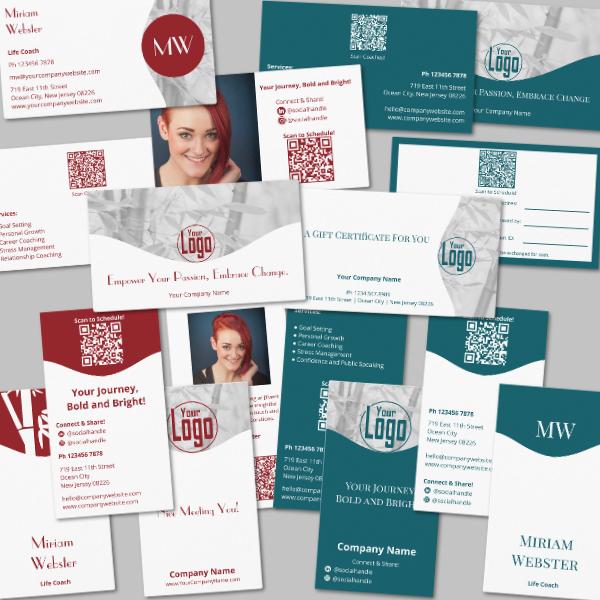
How To Choose A Life Coach Business Card Template
Read the post …: How To Choose A Life Coach Business Card Template -
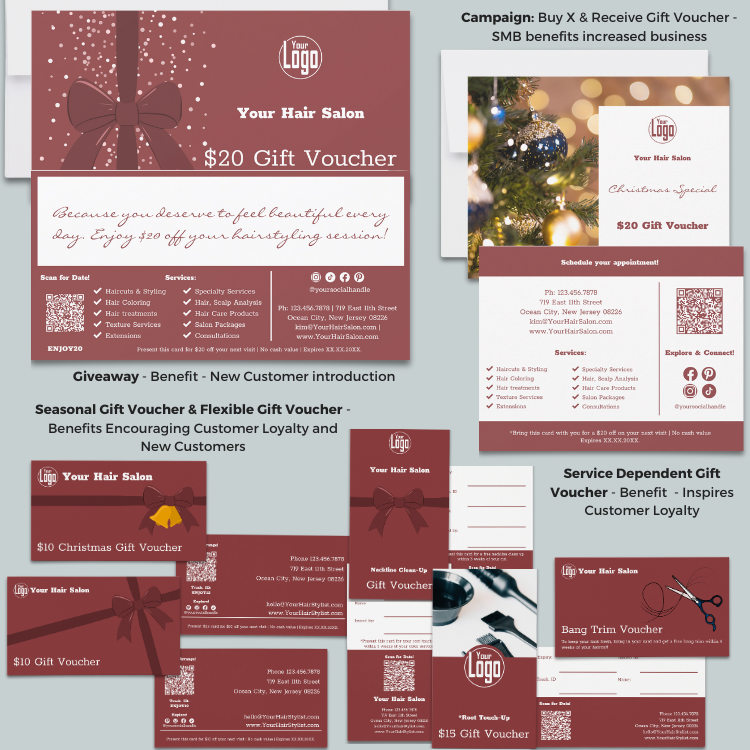
What Is A Gift Voucher? An SMB Offline Marketing Perspective
Read the post …: What Is A Gift Voucher? An SMB Offline Marketing Perspective -
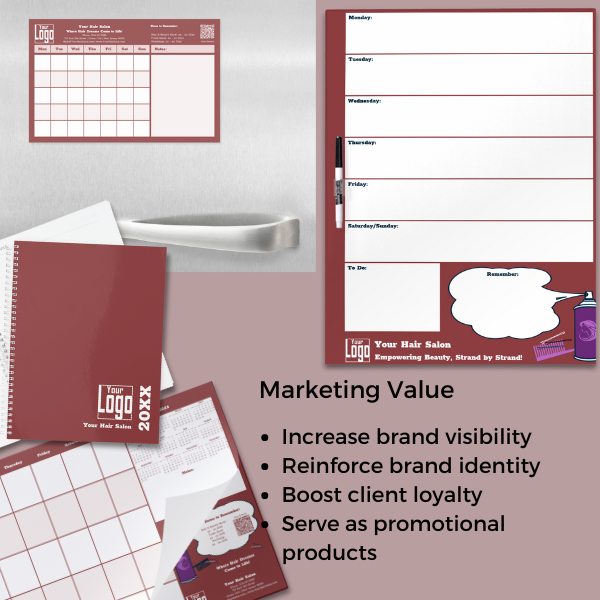
What is a Planner? A Small Business Perspective
Read the post …: What is a Planner? A Small Business Perspective
8. Frequently Asked Questions and Concise Answers about “How to Design a Logo”
A logo is a visual representation of a business or brand, typically consisting of symbols, text, or a combination of both. It’s important because it helps establish brand identity, creates brand recognition, and communicates the essence of the business to its target audience.
The key elements of a successful logo include simplicity, memorability, versatility, relevance to the brand, scalability, and timelessness.
Start by researching your brand identity, target audience, and competitors. Then, sketch out rough ideas, refine them, and iterate until you find a design that aligns with your brand and resonates with your audience.
Common logo design mistakes include using overly complex designs, relying on trends that may become outdated quickly, neglecting scalability and versatility, and failing to research existing trademarks or copyrights.
Consider the emotions and associations evoked by different colors, as well as their compatibility with your brand’s personality and target audience. Aim for colors that are visually appealing, memorable, and reflective of your brand identity.
While it’s possible to design a logo yourself, hiring a professional graphic designer can ensure a high-quality, polished result. Designers have expertise in visual communication, typography, and branding principles that can elevate your logo and make it more effective.
To ensure legal protection for your logo, conduct a thorough trademark search to verify its availability. Consider registering your logo as a trademark to prevent others from using it without permission. Additionally, ensure that your logo does not infringe on any existing trademarks or copyrights.
It’s important to have your logo in various file formats, including vector formats such as .ai, .eps or .svg for scalability and versatility, as well as raster formats such as .jpg or .png for web and digital use. Ensure that you have both color and black and white versions of your logo.
Test your logo across different platforms, mediums, and sizes to ensure its visibility, legibility, and impact. Gather feedback from colleagues, friends, or potential customers to assess its effectiveness in conveying your brand identity and resonating with your target audience.
The frequency of updating your logo depends on factors such as changes in your brand identity, shifts in your target audience, or evolving industry trends. While it’s important to maintain consistency in your branding, periodic updates may be necessary to keep your logo relevant and reflective of your brand’s evolution.
-

What Is A Brand Partnership? – A Small Business Perspective
Read the post …: What Is A Brand Partnership? – A Small Business Perspective -
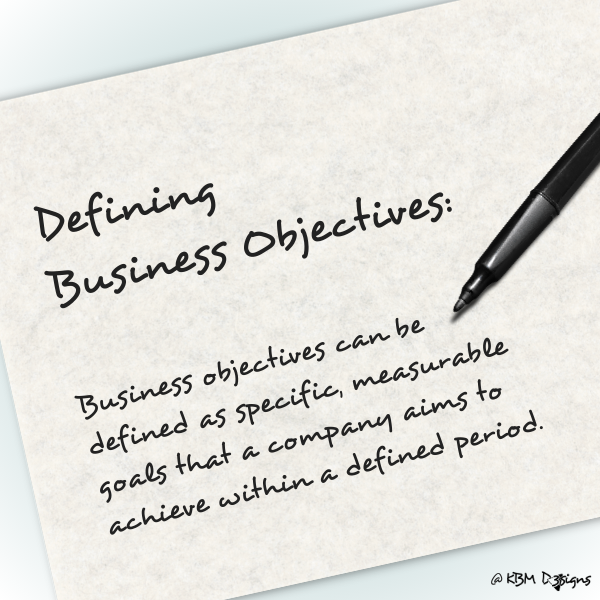
What Are Business Objectives?” Perspective Of A Small Business
Read the post …: What Are Business Objectives?” Perspective Of A Small Business -

What Is A Focus Group Market Research? – SMB Perspective
Read the post …: What Is A Focus Group Market Research? – SMB Perspective


